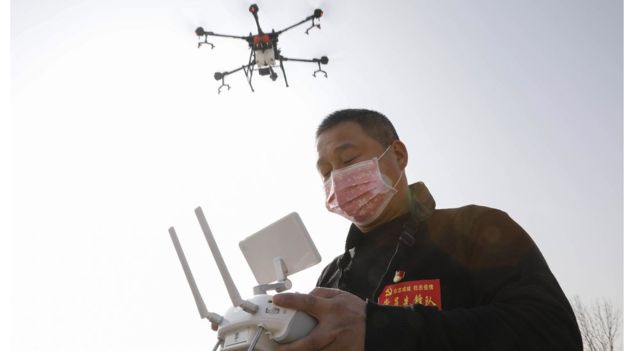How the COVID-19 Pandemic is Revolutionizing the Drone Industry
April 21, 2020
The coronavirus pandemic has been spreading rapidly across the world, and impacting virtually every sector of life. Businesses have been closing, airlines are struggling to stay afloat, and the world wishfully hopes for a cure for this new virus. Covid-19, first discovered in December of 2019 in China, has now ballooned into a global issue, hitting places from the United States to Italy especially hard.
As a result, the pandemic has changed the economic views of a myriad of people about what could become a major source of profit within the coming years. As people stay home more and more, delivery of essential items has become a significant necessity that people have struggled to access. For this reason, drone delivery could become a major player and a lucrative industry, as it does not pose as big of a threat to anyone’s health as any delivery interaction between people.
One core reason why drone delivery could be pivotal in the future of humanity is that it has a much better position in terms of time, and also reduces traffic on roads. Furthermore, drones would allow for less contamination in a more open air environment. This drastically contrasts the insides of a modern day delivery truck. Lastly, drones are much more energy-efficient, and this has been an aim of numerous tech companies in the last few years. The pandemic has given people a better comprehension of how formidable the drone industry could transform into.
When it comes to delivering items, time is money. Companies like Amazon, which is one of the big players in delivery today, race to hire employees in a time like this, because there is often a shortage of workers to get all their goods delivered in their corresponding locations. Drones would be an easy fix for these problems, as drones can travel much faster than vehicles are able to.
A big obstacle that all delivery workers face is traffic. Traffic can lead to major slowdowns in delivery times, and even sometimes cause significant delays. Some incidents include a jam on a highway in China that resulted in drivers waiting for days, unable to even inch their vehicles forward. Despite the issues that ground vehicles have been experiencing, drones will be able to avoid all of this inconvenience, and in addition, drones are automated, so they will be able to avoid each other. Air travel will also not get in the way of this technology because delivery services can be made at lower altitudes and do not need to fly up as high as passenger jets. Drones could be a game changer because they are much more effective in delivering objects in terms of time.
Drones are also much cleaner than most current delivery services, and because of this, could be a much more desirable form of transportation of materials. Drones are used in an open-air environment, so they are less likely to contract virus statins such as that of the coronavirus. Consequently, most diseases that are spread in a close environment would be made less of an issue via drone delivery. In modern day delivery vehicles, all the goods are packed close together in the back of a van, and this dense form of transportation allows for easy transmission of unwanted infections. These can potentially make delivery one of the potent forms of getting one’s goods because they may be exposed to numerous different sorts of viruses. On the other hand, drones deliver packages systematically and not all at once, so packages would not be packed together so compactly. This technology could revolutionize the amount of sanitary that delivery services have to offer.
Lastly, drones are more fuel-efficient than any modern day delivery service. When delivery workers drive trucks or cars to get their items to customers, the fuel costs can skyrocket. In fact, for a multitude of delivery companies, fuel costs is their biggest expense. Drones would completely change that, as drones are lightweight and do not carry as much material at a time. This would make for less fuel need to operate, and also more efficient energy-digestion.
Many delivery jets waste fuel because it takes fuel to carry heavy objects. In fact, the plane itself contributes a lot of the weight, and hence the cost. Consequently, drones are not heavy and are certainly not as massive as trucks, cars, or planes, and would allow a company’s budget to stretch further. Drones will not only change the lives of customers, but also delivery companies by allowing for a drastic reduction in costs.
Despite the fact that coronavirus has been clouding the world, it has led to many changes regarding the aptitudes of certain industries. The drone delivery market could become very lucrative within the next few years as people realize the importance of computerized delivery services. Drones are much more efficient in terms of time, and for a delivery company, time is the most prioritized factor.
Faster delivery implies a better experience for the customer and more profit for the company as a whole. To add on, drones reduce contamination, and allow for a less jammed delivery environment. Because packages are not constantly close together, the transmission of a multitude of viruses would be slowed down.
Finally, drone technology could make delivery much more fuel-efficient, further giving delivery companies the ability to stretch their budget. This technology could revolutionize how people live in the coming years and have a lasting impact on the human race.

